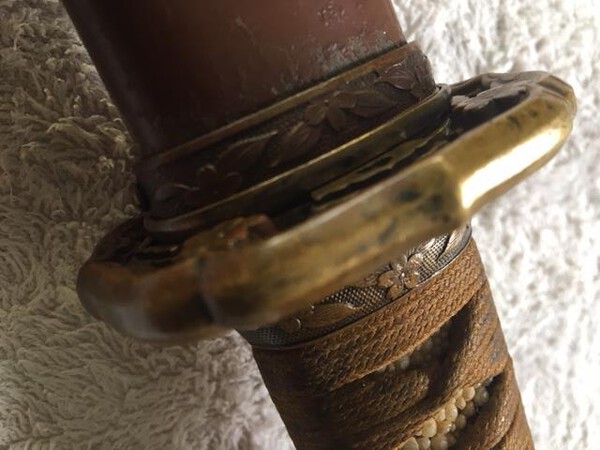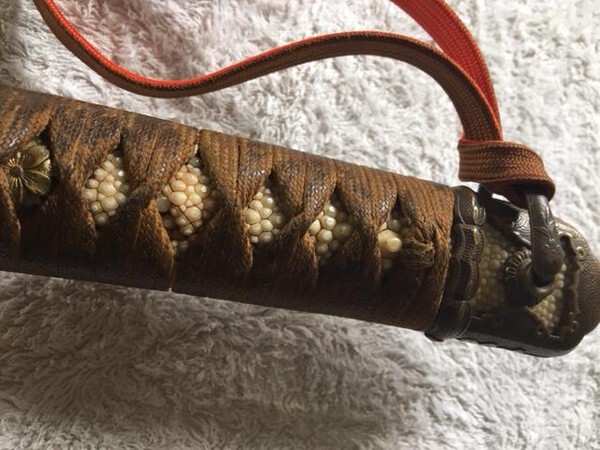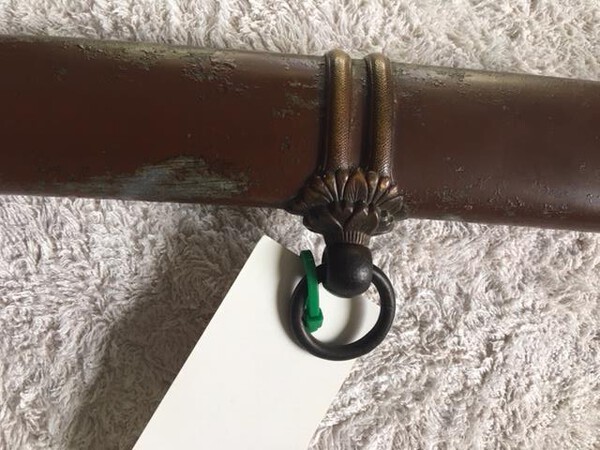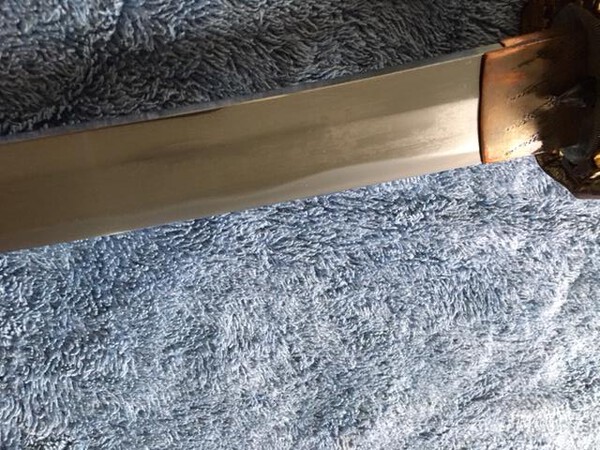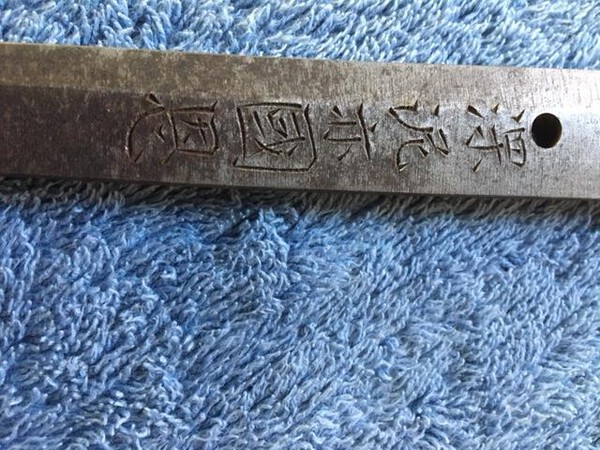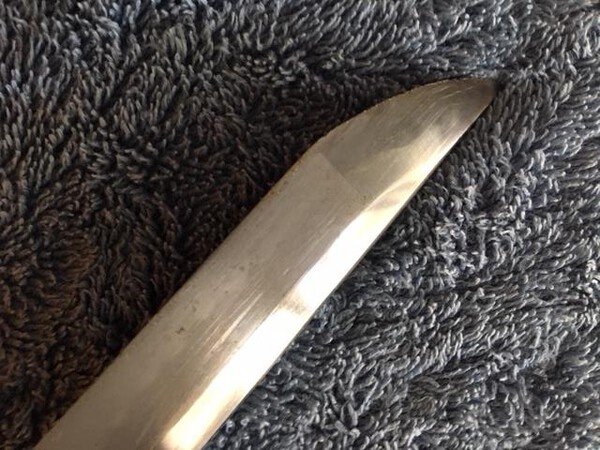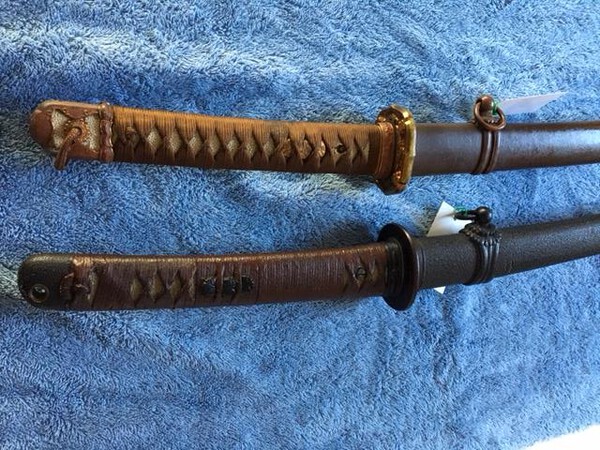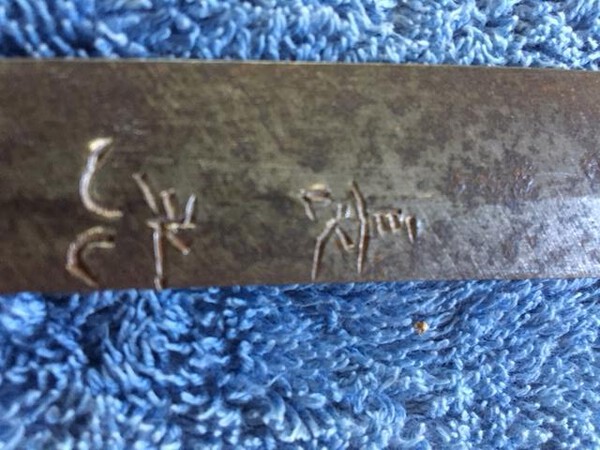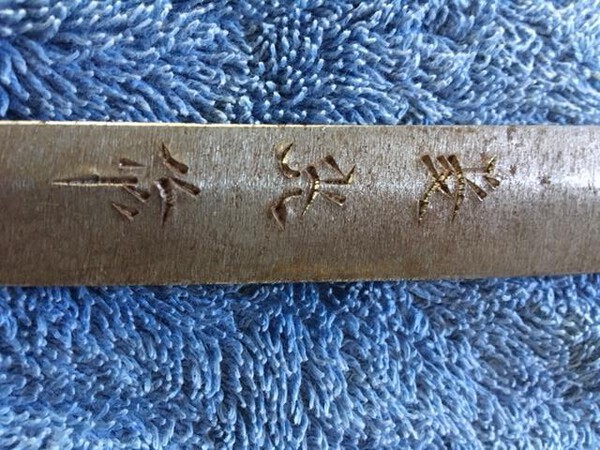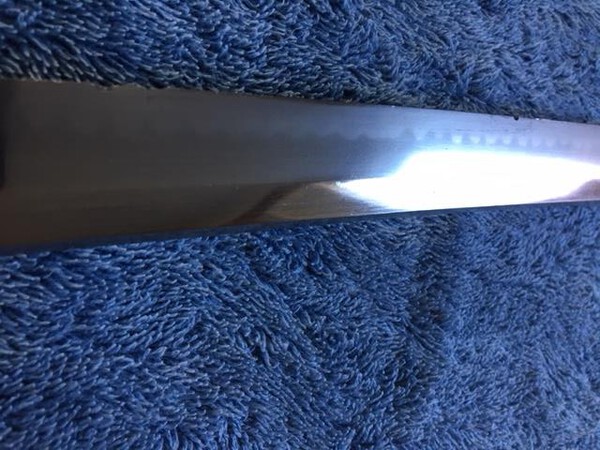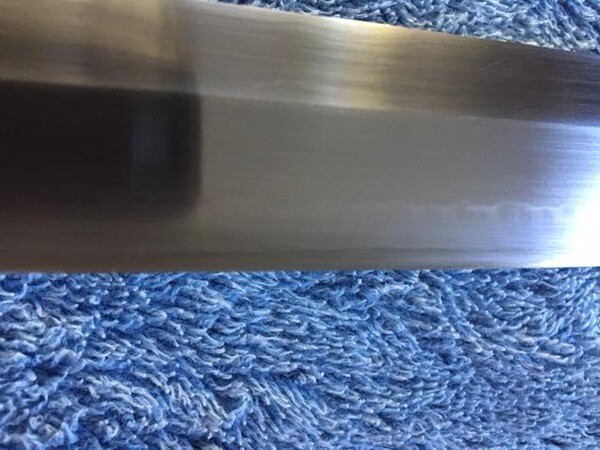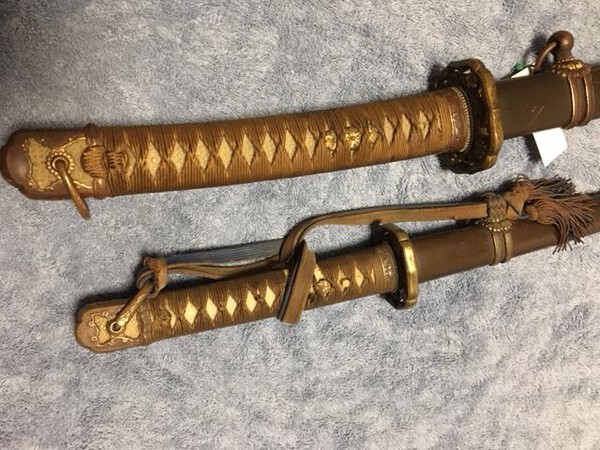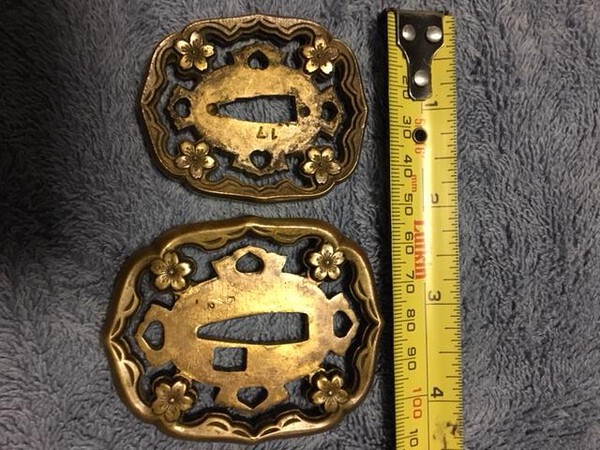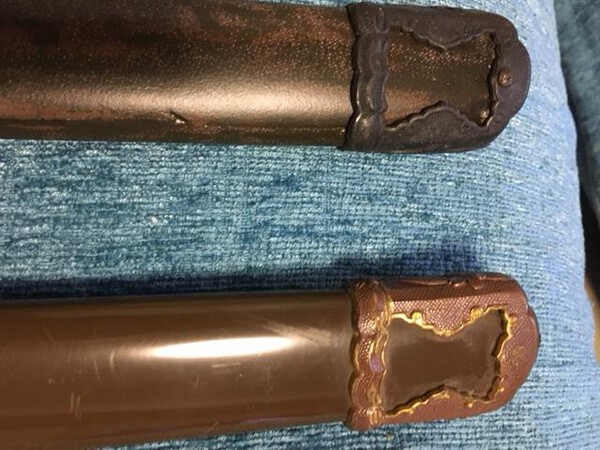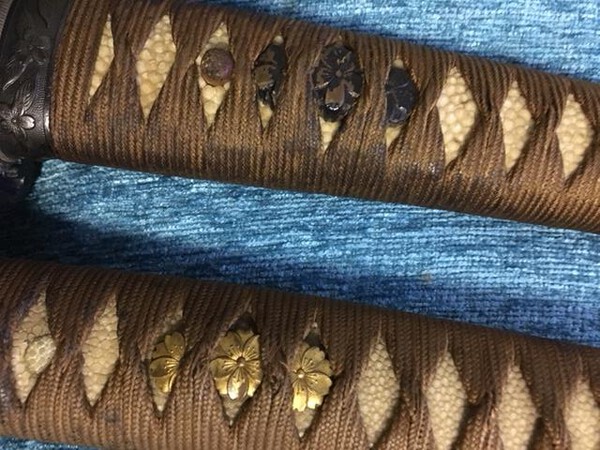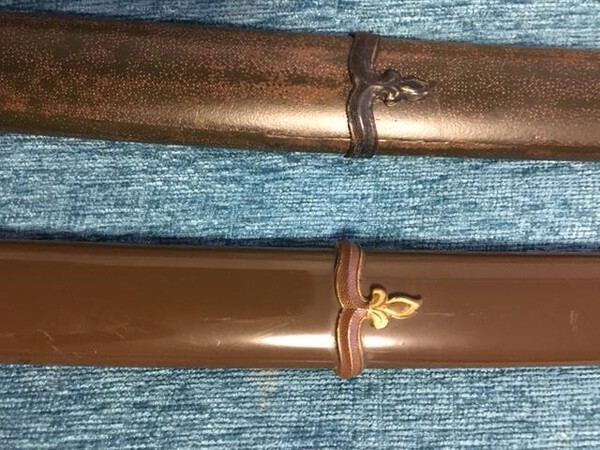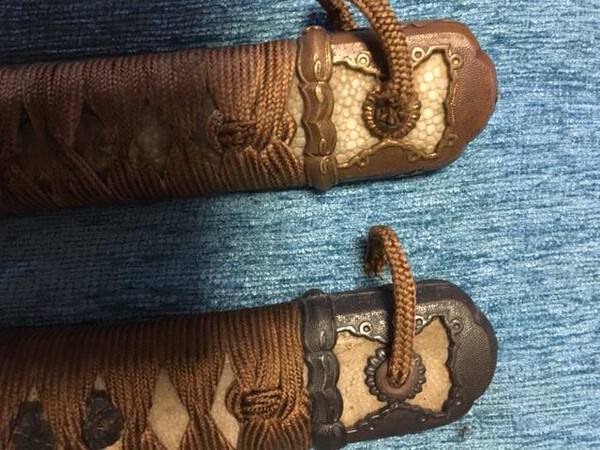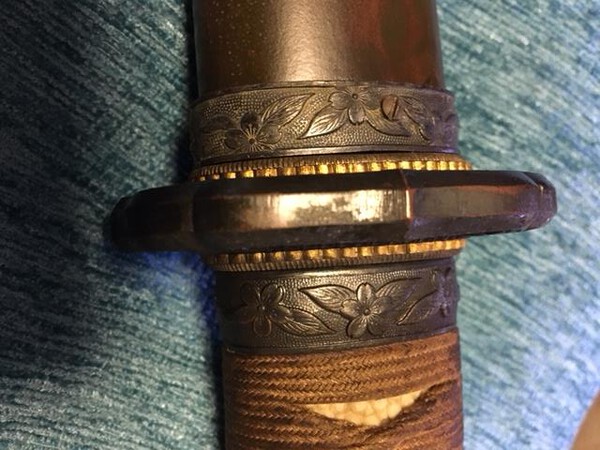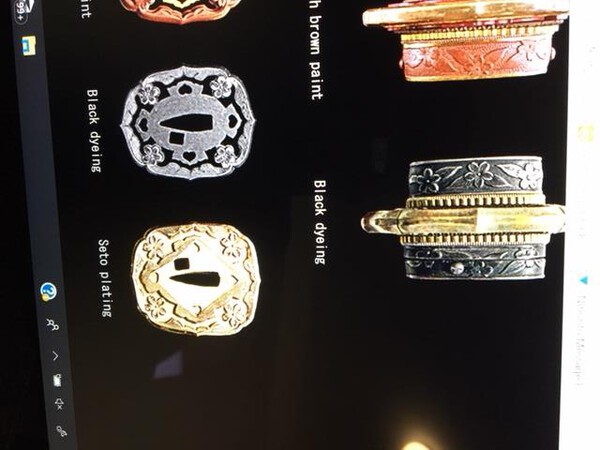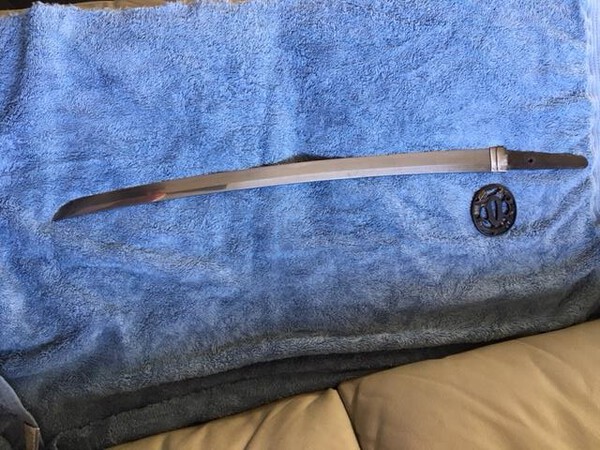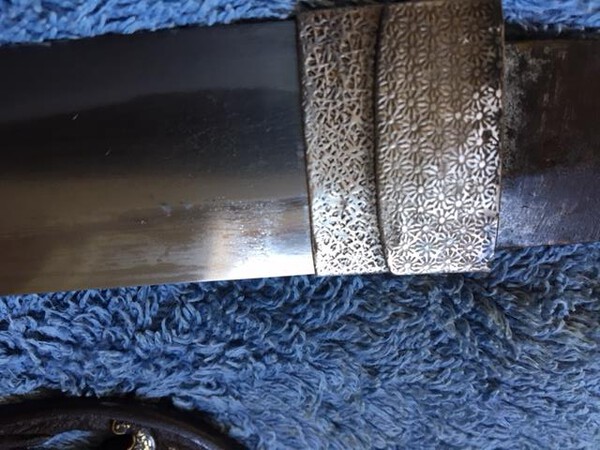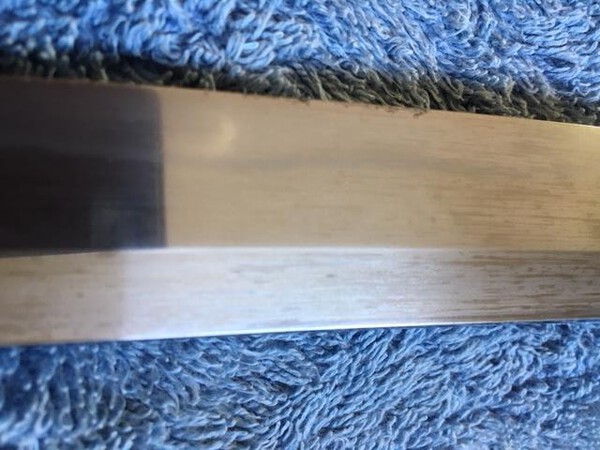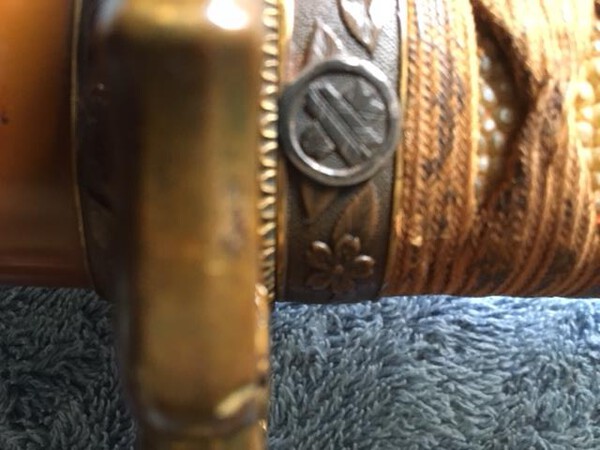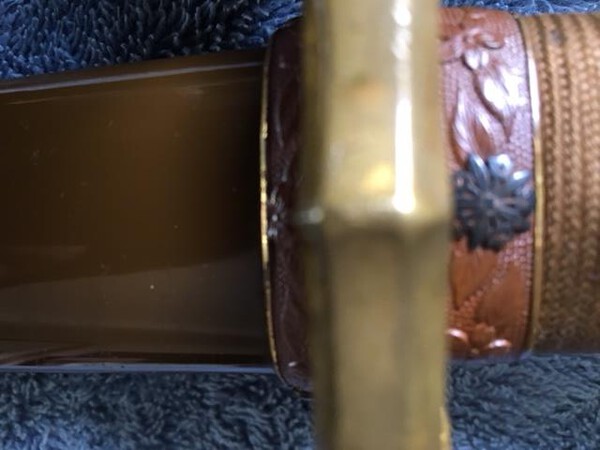-
Posts
1,921 -
Joined
-
Last visited
-
Days Won
85
Content Type
Profiles
Forums
Events
Store
Downloads
Gallery
Everything posted by IJASWORDS
-
It is a shin-gunto, with a typical oil quenched hamon. Still a nice sword.
-
Going through my stuff, I decided to take close look at my KOTANI YASUNORI shin-gunto. It has a pierced tsuba, large nodule same on the tzuka, a cupped (dust cover) bottom seppa, AND surprisingly, an aluminium saya. My questions are, 1. was the aluminium saya an upgrade, as the rest of the koshirae looks like it was made as a high rank special order. 2. when was the aluminium saya available to officers? I assume the aluminium saya was lighter in weight, and was popular with officers in the field who wanted to carry a lighter sword. 3. has any member run into a YASUKUNI-TO with an aluminium saya?
-
Hi Luis, I don't have a PhD in sociology, in fact I clean toilets for a living. So I know crap when I see it.
-
Luis and Jean are missing the point made by Stegel. These NCO swords are NOT nihonto where the value is in the blade, the blade is mass produced machine made. The value (to collectors) is in the whole item, where numbers and arsenal and inspection stamps align with specific production types, production times, and specific fittings. Changing things around renders them useless for future research, documentation, and reduces their value to "wall hanger" status. These are military artifacts with history, and their value is in their originality. Picking up on Jean's last point, a collector (like Stegel, Bruce etc) would know from the numbers what fittings it should have with the koshirae because of research and documentation.
-
Hang on a minute, if he sold it last April 24th, and he lists it again now (modified), does that mean the April sale was a shill bid and sale, and it went no where?
-
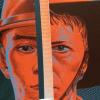
Attention Mantetsu Owners: A Survey
IJASWORDS replied to Bruce Pennington's topic in Military Swords of Japan
Hi Bruce, this is my Spring 1939 Mantetsu (you have the mune numbers), and it also exhibits wavy hamon. -
Hi Yimu, it is a WW2 KATO JUMYO SAKU blade.
-
WOW, thanks for the translation and link. It is a beautiful sentiment expressed on a WW2 officer sword.
-
Hi Trystan, I got your message and the link. Very much appreciated, Neil.
-
-
Thanks John, no wonder I couldn't find it in a list of sword smith oshigata. What are the two kanji before Kuni? Can I take it then the last two read kuni on? More help needed I am afraid.
-
Help with this mei would be appreciated. I suspect it is KUNITADA and OKIMOTO is the only smith I could find with that name. Thanks.
-
Hi Eric, you are correct, zzz24 is NAGAMITSU SAKU in type 3 mounts. There are no other numbers, no dates, no stamps. Picture of BOSHI attached. Remember, it is unpolished.
-
Hi Eric, attached photos of a couple of my NAGAMITSU swords. One in 98 mounts, the other in type 3. The 98 is the two character, and the Type 3 is the two character and SAKU. An attempt at photographing the hamon on the unpolished blades also attached.
-
Dave, as usual you nailed it! Yes off my "light weight" 98 officer sword. And thanks for the link, I haven't come across too many in my years of collecting.
-
Good question... I leave alone, but obviously take care of them in handling and storage. Leather conditioners whilst potentially preserving often change the color and finish of the original leather.
-
Brian, it of course could have been used by a "pilot/tanker/submariner", and I agree it was a wak taken to war by its owner. But from a militaria historical aspect, one needs to know if it was a regulation length used exclusively or compulsorily for these roles. I think not.
-
Do any collectors know the origin and use of this "mini" tsuba, photographed against the regular size example. They are obviously both pierced, but the mini one has no provision for a securing spring clip or leather strap.
-
Nice sword. The current view on "tankers and crew" swords is that they are a wak taken to war when length regulations were relaxed due to blade shortages. The Government actually advertised for wak length family blades (around 21 inches) later in the war. So whilst it is a great outfit, I would question the use of crew or tanker. I believe it is a fairly recent marketing description.
-
-
Hi Bazza, yes a very rare option. There is a photo of mine, and a screen shot of Ohmura-study web site. He calls it "dying" but from my research it is produced by a special plating process of a silver/gold/copper alloy, some times called "black gold". I have only seen one in the flesh (my one), so any others that members could post, would be greatly appreciated.
-
Dave, looks a lot like a similar blade of mine, described as 1700's Mino, and mumei. But I am no expert, so any comments would be welcome.
-
I should have mentioned that both swords have the very thick pierce tsuba.
-
Bruce, second from the right is green lacquered shark skin saya, and fittings are the rare "blackened" variety. Brandon, yep mons on fuchi. Interestingly both on type'94's and both general swords with provenance.
-



